Build Your Own Internal MCP Server with n8n and Claude
This week we look at how to create your own custom MCP server in n8n and connect it to Claude for powerful internal knowledge access
Hey there!
Welcome to this week's NoCode SaaS newsletter, where I take you along on the journey of building a profitable business without code using AI.
This week I want to show you something that's changed how we work internally at Create With - building custom MCP servers using n8n.
I recently saw a fascinating thread from Toby Lütke, the CEO of Shopify, following up on his widely shared AI first memo about their internal tool called Scout.
It's essentially an internal MCP server and has indexed hundreds of millions of merchant feedback items, giving anyone at Shopify instant access to customer insights.
But what really caught my attention was that Shopify isn't just using MCPs as simple connectors.
They're treating them as the backbone of a new kind of company operating system.
Every team is building MCP-powered tools that are living, breathing extensions of their expertise.
Their Creative Production team has an agent, their Product team has the AlphaAI mesh, and they have a VibeOps Stack for internal development.
Each tool doesn't just share data - it shares the team's entire playbook, workflows, and know-how.
This is exactly the direction we've been moving at Create With, and today I'm going to show you how to build your own MCP server in n8n and connect it to Claude.
It’s a lot easier to set up than you might think - you don’t need write any code!!
Once you see how powerful this is, you'll understand why MCPs are becoming the new standard for how companies operate with AI.
What exactly is an MCP server?
Before we dive into the how-to, let me quickly explain what MCP (Model Context Protocol) servers are and why you’re reading about them everywhere at the moment.
MCP is a protocol that lets AI assistants like Claude connect to external data sources and tools in a standardized way.
But it's becoming much more than just a connector, companies like Shopify are using MCPs as the backbone of their entire AI operating system.
Think of it as creating not just a bridge between your AI and your data, but packaging your team's entire expertise into something that can be accessed and used by anyone in your organization.
When you build an MCP server, you're essentially creating what some are calling "an expert in a box". Your workflows, knowledge, and decision-making processes all become accessible through natural language.
The MCP repository becomes your gateway to all company knowledge and capability.
The beauty of building your MCP server in n8n is that you get all the flexibility of n8n's workflow automation combined with the intelligence of AI.
You can connect to literally any data source or app that n8n supports. Databases, APIs, spreadsheets, you name it.
Why build your own MCP server?
There are some really compelling reasons why MCPs are becoming the new standard:
Teams become scalable through their tools. Instead of being a bottleneck, each team can package their expertise into MCP powered tools that anyone can access. It's like cloning your best people's knowledge and making it available 24/7 (imagine getting less of those weekend Slack messages!!)
Building agents that know your business. Building MCPs containing all your data doesn’t just benefit the humans you work with, you can also give access to AI agents. For example in n8n you could have an AI Agent that can query data from your MCP about your latest content and automatically write social posts about it.
Instant access to expertise: Instead of scheduling meetings or waiting for responses, anyone can tap into any team's knowledge immediately through natural language queries.
Keep your tools organized: Once you build an MCP server in n8n, you can reuse those same tools from any workflow or AI agent. It becomes part of your company's AI operating system. You only have to update it one place.
Works everywhere: You can use these MCP servers from Claude, from within n8n itself, or from any tool that supports the MCP protocol (there are more and more every week). Build once, use everywhere.
I really think understanding MCPs and learning how to use them is important for any business who is serious about embeddeing AI in everything they do.
Watch the video tutorial
I've recorded a video tutorial that walks through the entire process of setting up your MCP server in n8n and connecting it to Claude. In the video, I show you our actual Create With MCP server in action and demonstrate how to build your own from scratch.
I would recommend reading my previous post about building a RAG database if you follow this tutorial as we are using a lot of what we built in that here.
Setting up your first MCP server in n8n
Below I'll walk through the key steps from the video tutorial in more detail. If you prefer to follow along visually, definitely check out the video above first.
Step 1: Create the MCP Server Trigger
First, you need to create a new workflow in n8n and add an MCP Server Trigger node. This is what will listen for requests from Claude.
When you add the MCP Server Trigger, n8n will generate a unique URL for your server. This is the URL you'll need to connect Claude to your MCP server later. It'll look something like:
https://your-n8n-instance.com/webhook/mcp/your-unique-id
Keep this URL handy - you'll need it in a minute.
Step 2: Connect your tools
Now comes the fun part - connecting the tools and data sources you want to make available through your MCP.
In our Create With server, we've connected six different tools:
Events database
Featured content
Tweets
Newsletter archives
YouTube video transcripts
Internal documentation
Each tool is connected as a separate branch from the MCP Server Trigger. The key here is that each tool needs a clear description so Claude knows when to use it.
For example, our YouTube videos tool has this description: "Contains a database of YouTube videos published on the Create With YouTube channel"
This description is crucial, it's what Claude uses to decide which tool to use when you ask it a question.
Step 3: Set up your data retrieval
For each tool, you need to configure how it retrieves data.
We're using a Supabase vector store for our RAG (Retrieval Augmented Generation) database, but you could use any data source n8n supports.
If you want to learn more about setting up a RAG database in Supabase, check out my previous tutorial on creating RAG databases.
Here's how we configured our YouTube videos tool:
Added a Supabase Vector Store node
Set it to retrieve up to 50 results
Added a metadata filter to only pull YouTube video content
Connected it to GPT-4 for processing
Used OpenAI's embeddings for semantic search
The beauty of using a vector store is that you can ask natural language questions and it will find semantically similar content, not just keyword matches.
Step 4: Connect Claude to your MCP server
Now for the magic moment - connecting Claude to your new MCP server.
Open Claude's settings
Go to the Connectors section
Click "Add Custom Connector"
Paste in your MCP server URL from Step 1 - make sure you use the production URL!
Give it a name (like "My Company MCP")
That's it! Claude will now show your MCP server in its list of available tools.
Testing your MCP server
Once everything's connected, you can test it right in Claude. Just ask a question that would require data from your MCP server. For example, I asked Claude:
"Can you write a tweet based on the latest Create With YouTube video?"
Claude automatically recognized it needed to use our MCP server, requested permission to access the YouTube videos tool, pulled the latest video data, and generated a perfect tweet based on the content.
The first time Claude uses each tool, it will ask for permission. You can click "Allow Always" if you want it to use that tool without asking in the future.
Advanced tips and tricks
Using your MCP from other n8n workflows
One of the coolest things about building your MCP in n8n is that you can use it from other workflows too.
Just add an MCP Client node to any workflow, paste in your MCP server URL, and boom - that workflow now has access to all your MCP tools.
This is incredibly useful for keeping your automation organized. Instead of rebuilding the same data retrieval logic in multiple workflows, you build it once in your MCP and reuse it everywhere.
Adding authentication and security
If you're dealing with sensitive data, you'll want to add authentication to your MCP server. n8n makes this easy with built-in authentication options for webhooks. You can use:
Basic authentication
Header authentication
Query parameter authentication
JWT tokens
For our internal MCP, we use header authentication with a secret token that only our team knows.
Monitoring and debugging
n8n's execution history is really useful for debugging your MCP server.
You can see exactly what queries Claude is sending, what data your tools are returning, and where any errors might be occurring.
Pro tip: Add a Set node after each tool to format the response data exactly how you want Claude to see it. This gives you fine control over what information gets passed back.
Combining multiple data sources
Don't limit yourself to just one data source per tool.
You can create complex workflows that pull from multiple sources, process the data, and return a unified response.
For example, we have a tool that combines customer feedback from our surveys with purchase data from Shopify to provide insights on how feedback correlates with customer behavior.
The MCP handles all the complexity, Claude just sees a simple tool it can query.
Building your company's AI operating system
What's really exciting about this approach is that you're not just building isolated tools, you're creating what's essentially an AI-powered operating system for your company.
At Shopify, teams aren't just sharing data through their MCPs, they're sharing their entire playbook. Scout gives access to hundreds of millions of merchant feedback items, but more importantly, it provides the context and workflows for how to interpret and act on that feedback.
This is intentional architecture, not accidental automation. When you build MCP servers this way, you're creating:
Knowledge repositories that capture not just information but expertise
Workflow automation that encodes your team's best practices
Composable tools that can be mixed and matched for new capabilities
Living documentation that stays current because it's actively used
The shift here is profound - instead of AI replacing people, it's amplifying them. Each expert in your company can package their knowledge and make it accessible to everyone. Your company becomes smarter as a whole.
Getting started with your own MCP
If you want to build your own MCP server, here's what I'd recommend:
Start simple: Pick one data source to begin with. Maybe your customer feedback, your documentation, or your product catalog.
Use existing tools: If you already have workflows in n8n that retrieve data, you can easily adapt them to work with an MCP server.
Test thoroughly: Use Claude to ask various questions and see how your MCP responds. Refine the tool descriptions and data retrieval until it works smoothly.
Expand gradually: Once you have one tool working well, add more. Each new tool makes your MCP server more powerful.
Share with your team: The real power comes when your whole team can access internal knowledge through Claude. Set up MCP connections for everyone who could benefit.
What's next?
The MCP ecosystem is evolving rapidly. What we're seeing at companies like Shopify and what we're building at Create With is just the beginning. MCPs aren't just connectors anymore, they're becoming the backbone of how AI-powered companies operate.
Every tool, every workflow, every bit of expertise can be packaged and made accessible through this new operating system.
Resources
If you want to learn more about building AI agents and automation, check out the Create With YouTube channel where we have uploaded a ton of other tutorials.
Also don't miss our weekly Create With podcast where we discussed MCP servers in detail this week.
That's it for this week!
Building your own MCP server might seem complex at first, but hopefully the video tutorial should make it a bit clearer. Once you get it running, I think you’ll get addicted to adding more and more tools to build out your companies’ own AI operating system!
Let me know if you build your own MCP server - I'd love to hear what tools you connect and how you're using it! Tag me on X/Twitter @jamesdevonport with your creations.
Thanks again for reading, and happy building!
James
P.S. - We just launched the new Create With Membership program with office hours where youc an ask quesitons about building your own AI company operating system, get tutorials, courses and early invites to our events.



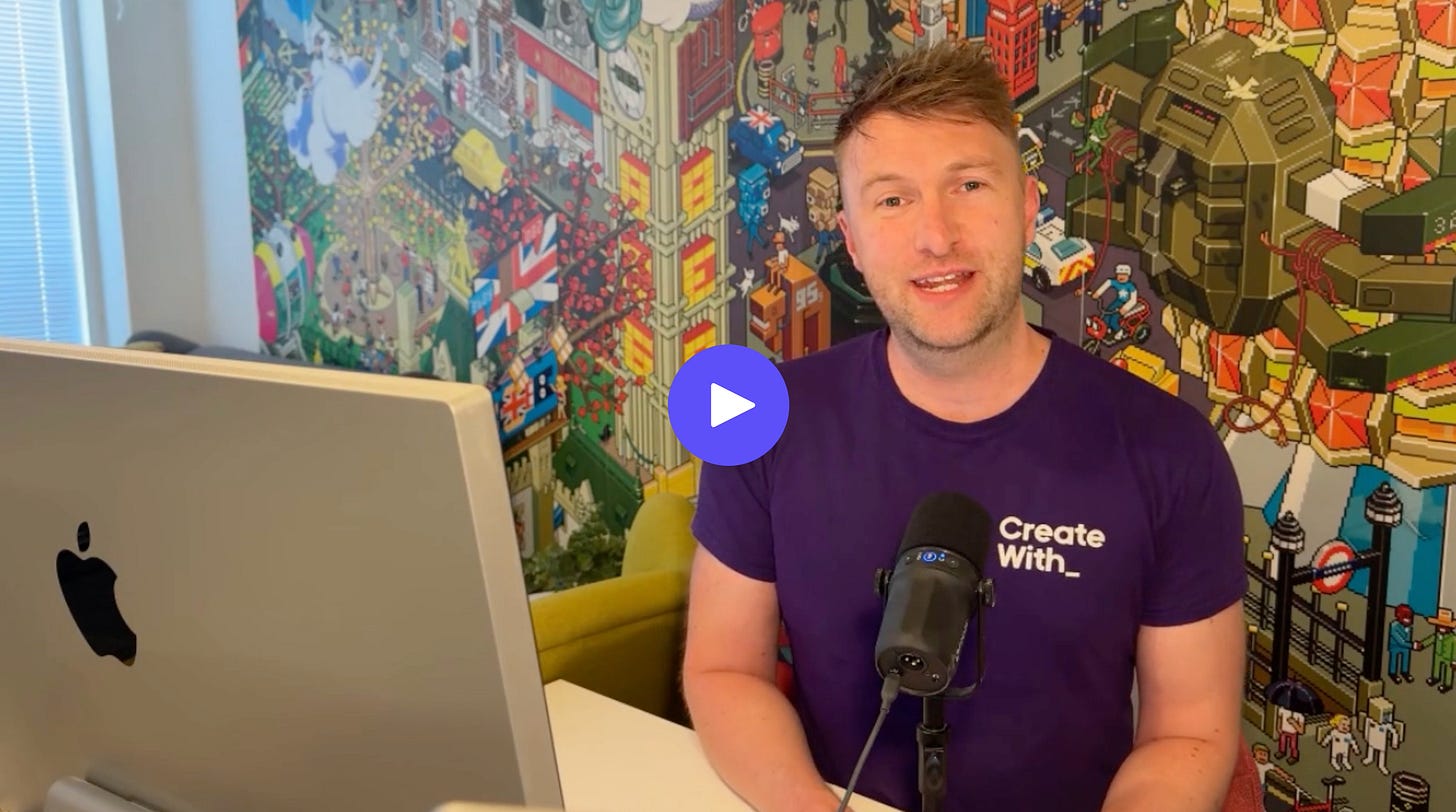
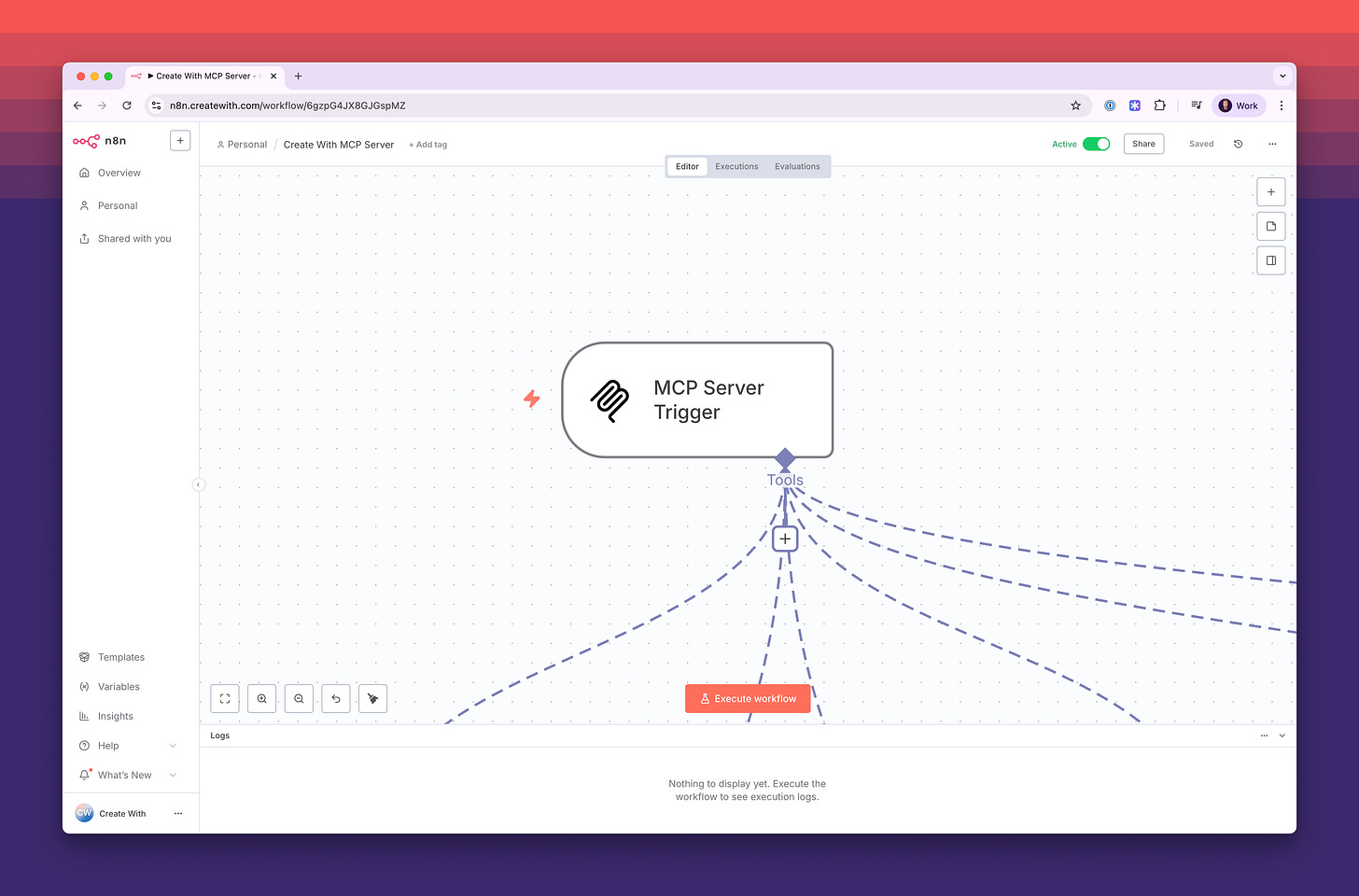
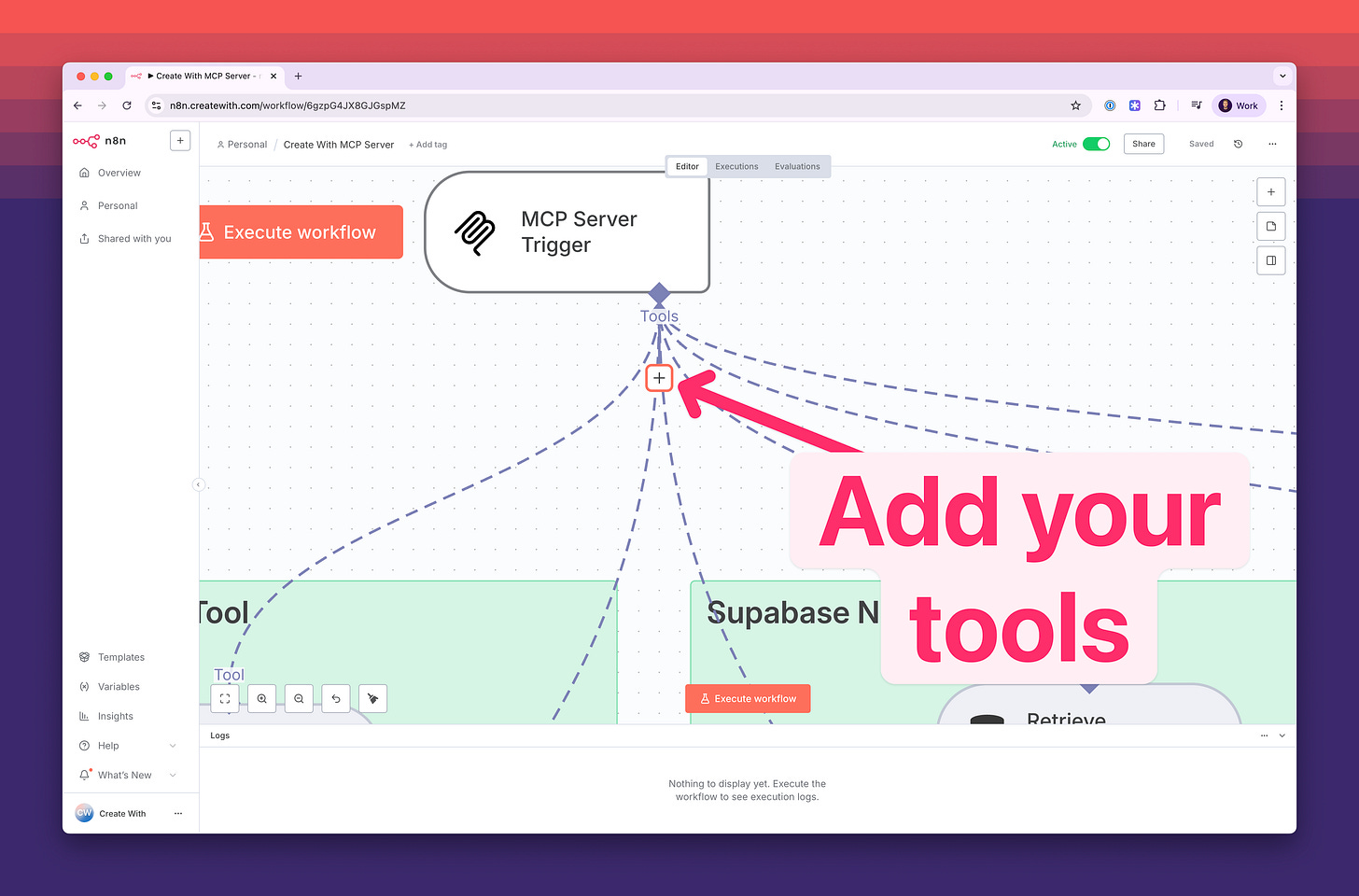
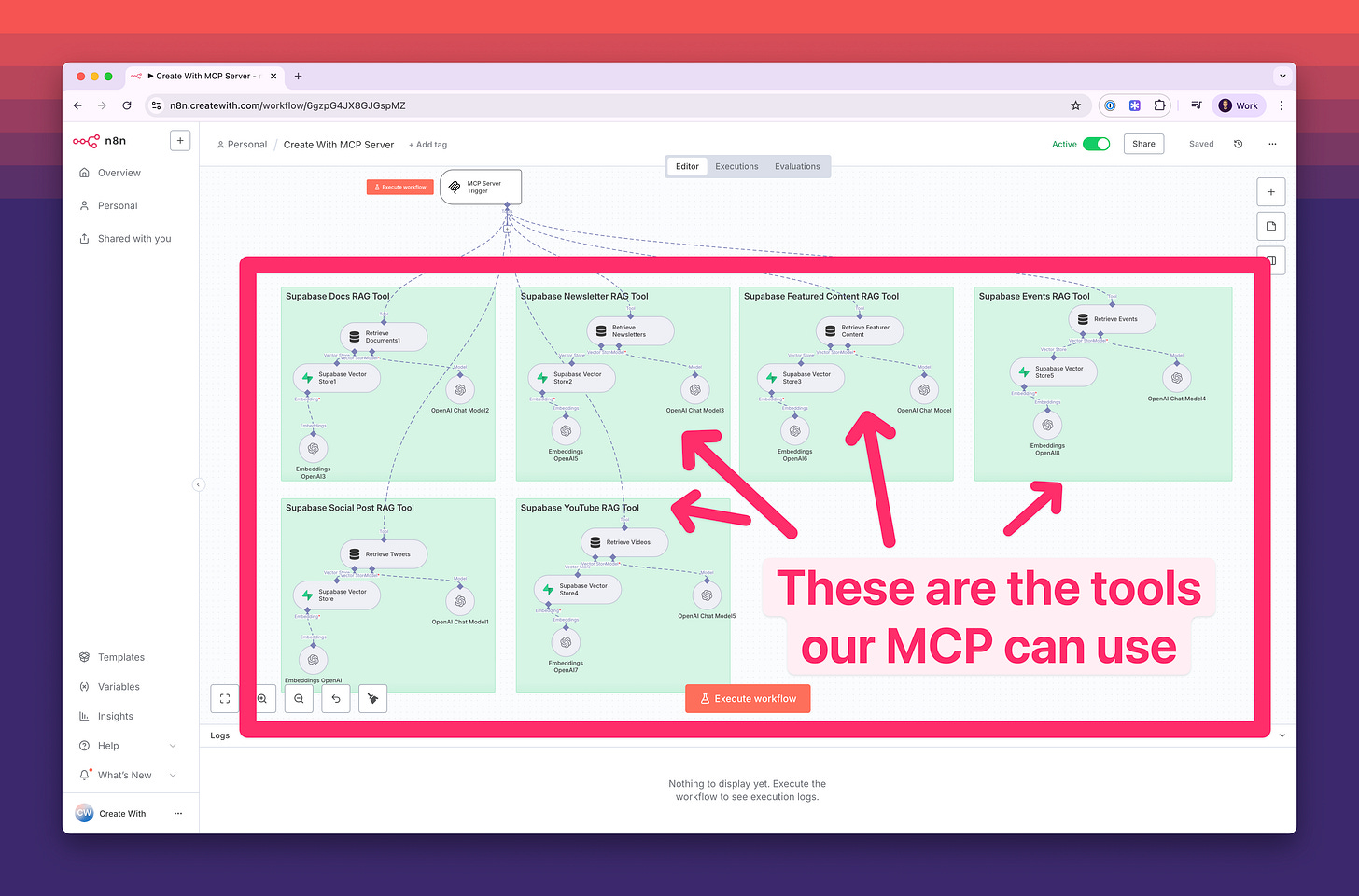
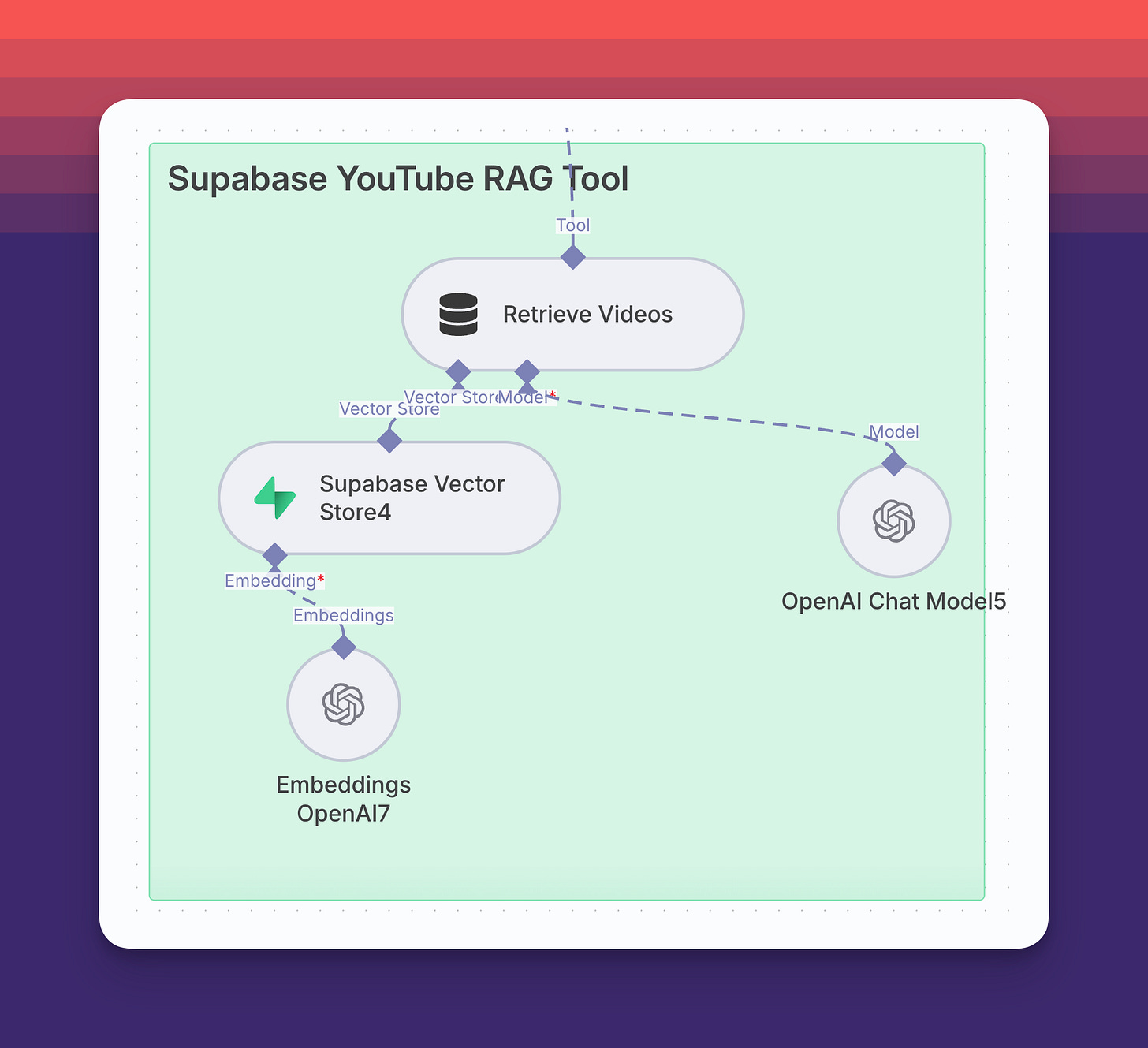
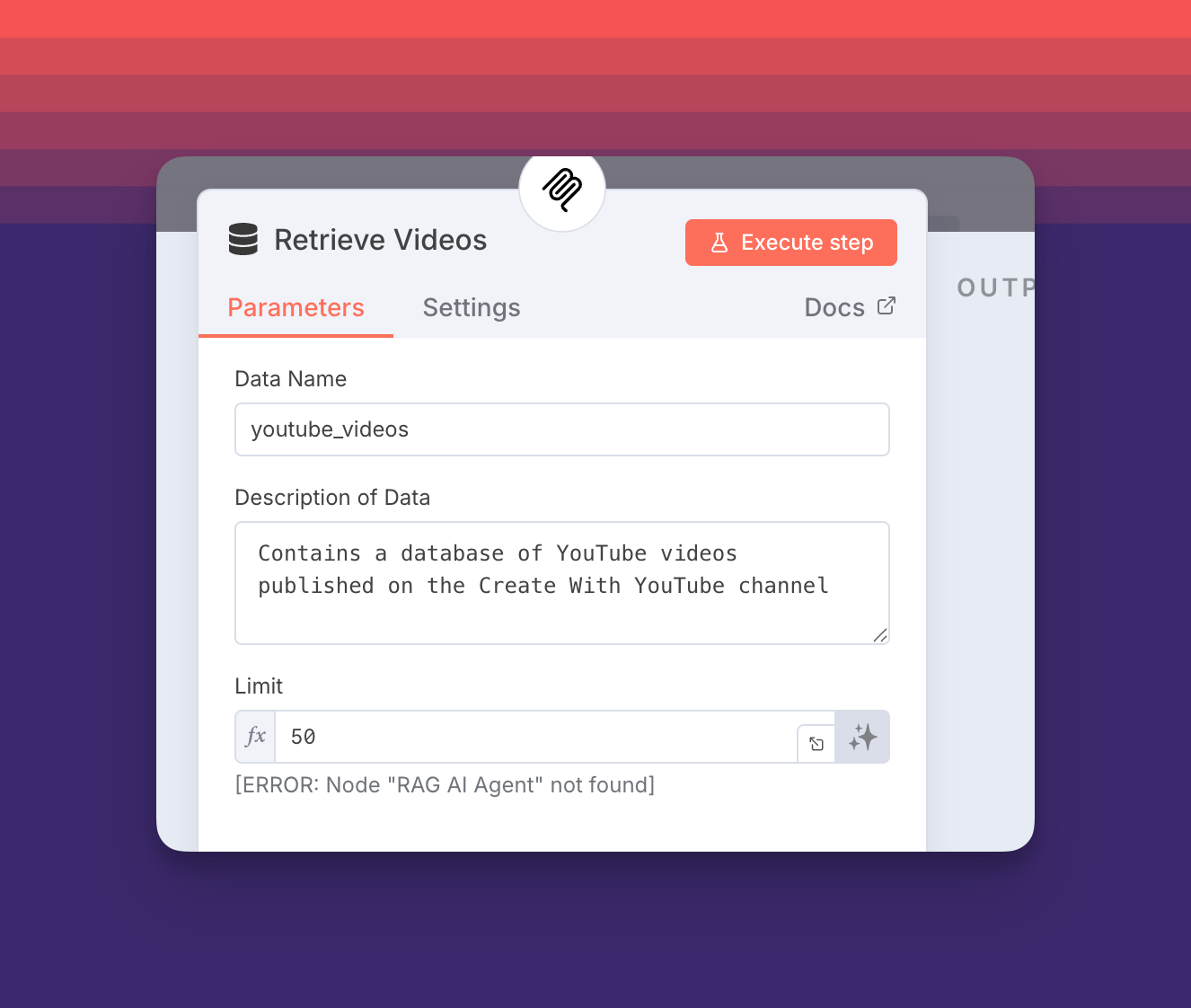
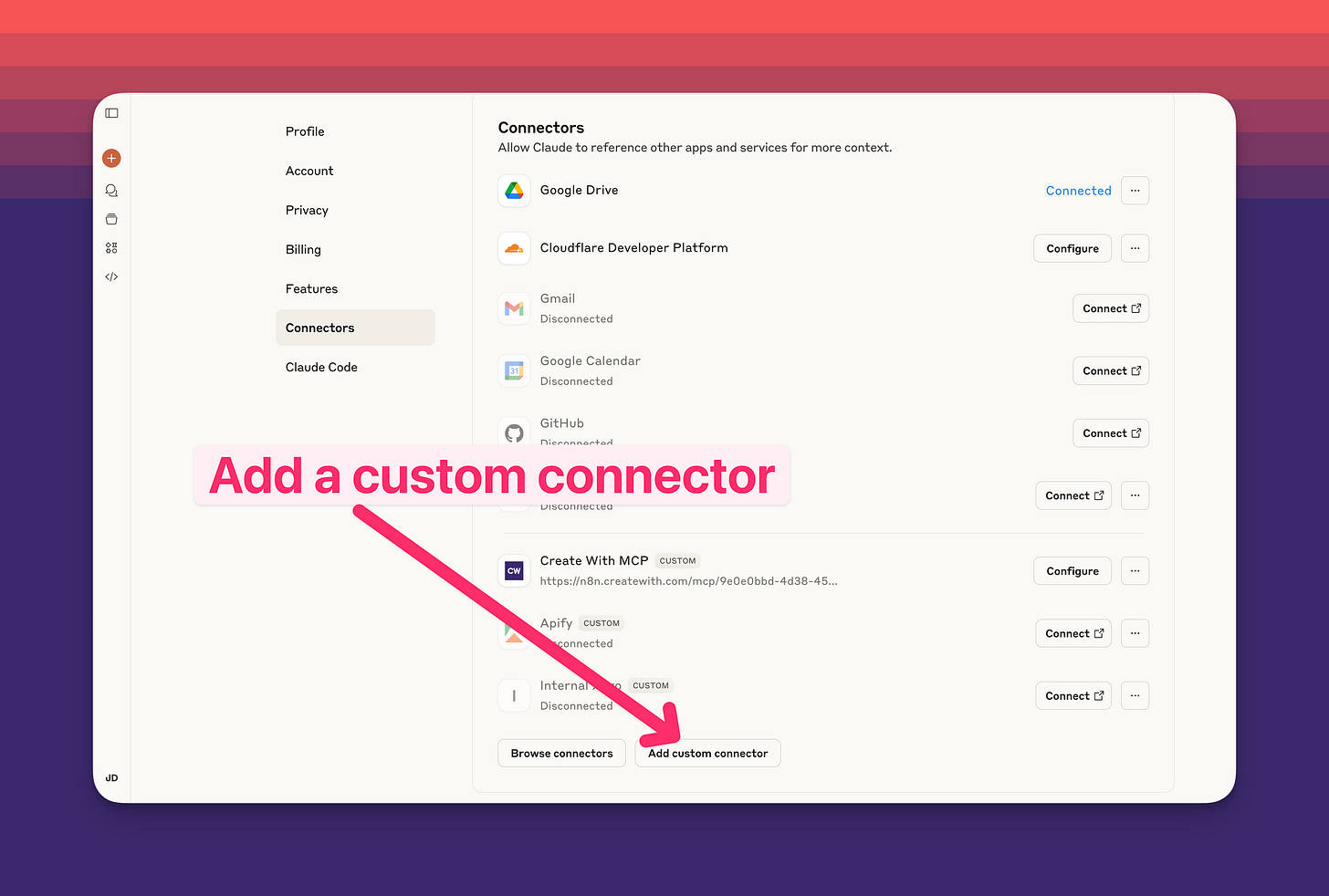
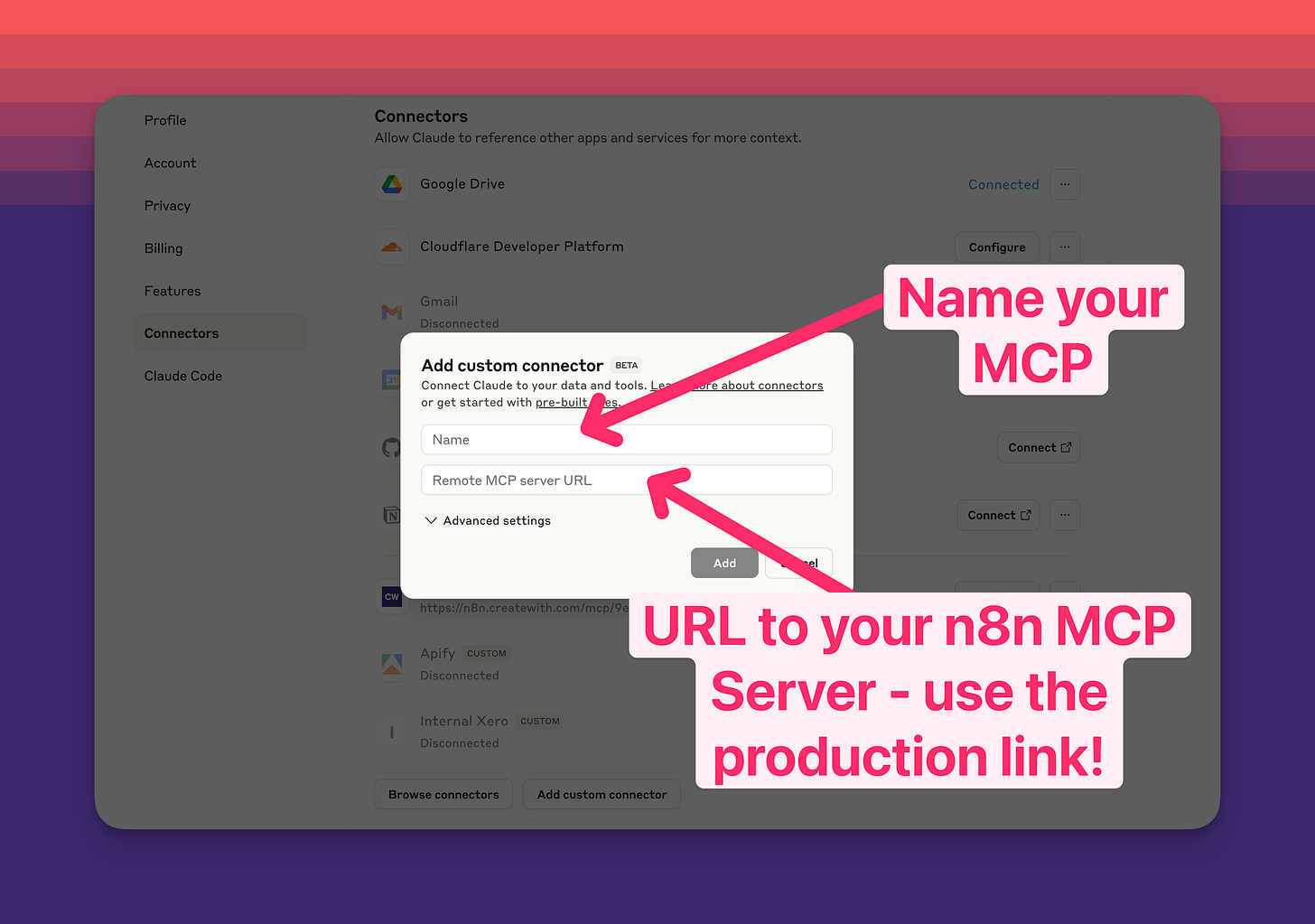
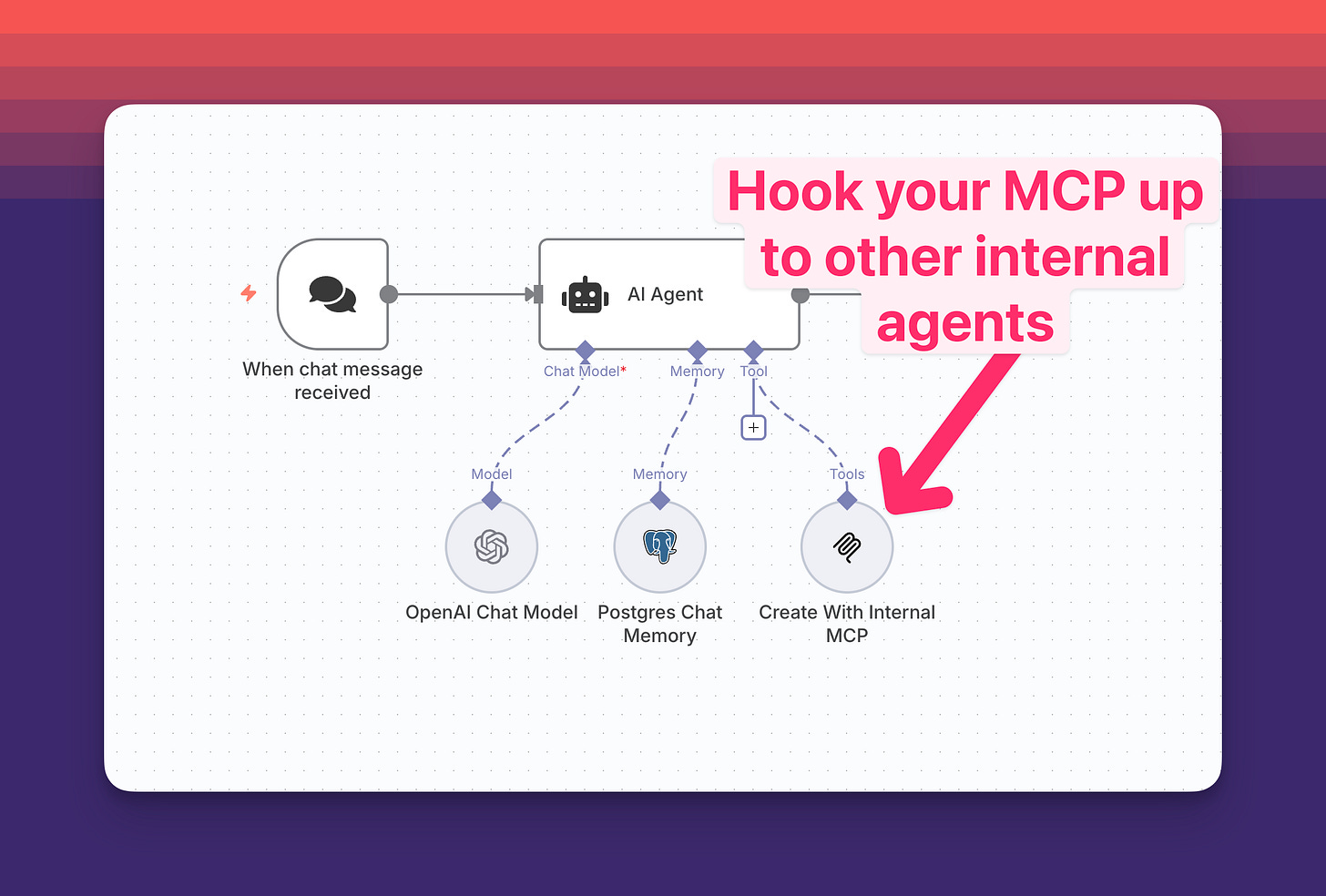
Hi James, do you need a Pro or Max plan to connect the MCP server or will the Claude free plan be enough? I can’t see the option in Claude, but I’m unsure whether it’s because I’ve run out of trial credits or because I’m on a free plan. Thank you very much!